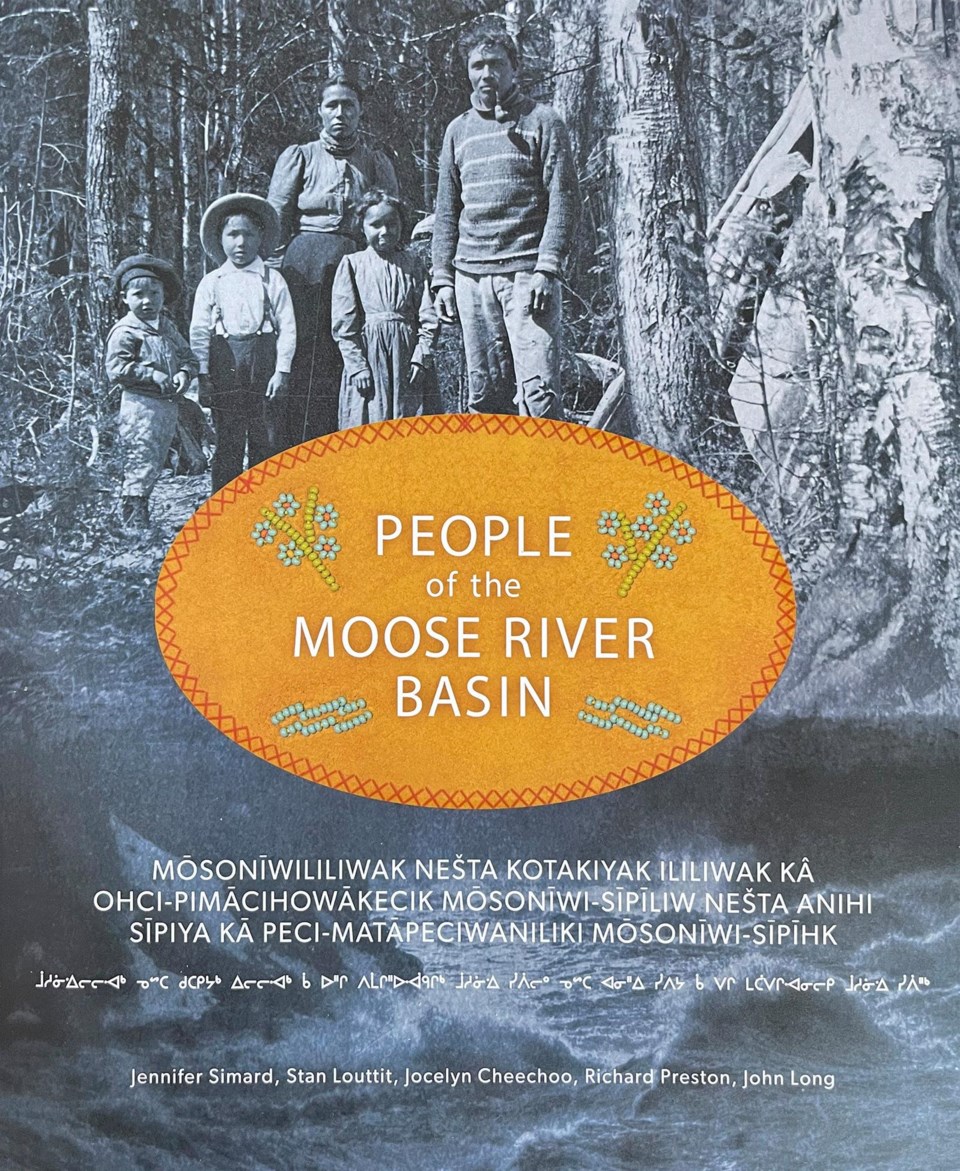A book that was negotiated as part of the environmental assessment approval for the Lower Mattagami River hydroelectric project is out now.
Moose Cree First Nation’s resource protection department recently released the book People of the Moose River Basin.
It was produced as part of the terms and conditions of the environmental assessment (EA) approval for the Lower Mattagami River project. Members from Moose Cree, Taykwa Tagamou Nation and the MoCreebec community contributed to the book as well as some non-Indigenous people, according to Jennifer Simard, Moose Cree’s director of OPG relations.
“Back then, the approval of that project came with terms and conditions and the creation of a historical text that told the story of people who live there and how they’ve been impacted by the hydroelectric development was a requirement,” she said. “Before any dam, any other further development could happen, our people had negotiated the experience of First Nation and non-Indigenous people would have to be documented in a book.”
Simard said she’s proud of the people who fought for the book to be a part of the EA approval.
“Usually, you see terms and conditions as, ‘You have to test the water, you have to do these studies,’” she said. “This was the first time I’ve seen part of the environmental assessment was, ‘You have to tell the story of what happened to the people on this river before the dams came and what happened to them when the dams were built.’”
The hydroelectric project ended in 2015 but it took eight years to write the book, with more than 40 contributors taking part in the process.
According to Simard, the book starts with the ancient First Nation stories of how the world was created, going all the way to the time when newcomers came and how the land was surveyed for mining and hydroelectric potential.
“We were never consulted when those things were built but now we’re a partner with the OPG and things are starting to change,” she said.
The book was originally supposed to be used as a pedagogical resource in schools. One of the reasons why First Nations negotiated the book to be included in terms and conditions was to teach the young generation about what happened, so the same mistakes aren’t repeated, Simard said.
“So that the real history of our area is going to be taught in our schools and not (by) a history book written by somebody who lives in Toronto,” she said.
Working on the book for Simard was a learning experience which she loved.
“Being a part of that was really inspiring: to hear about my own people and what they survived and how they were treated and how they hoped for the future,” she said noting how some of the elders who worked on the book have since passed away.
“It’s very emotional for us to get this book out because they (elders) didn’t get to see it published. Our elders said the book is an ongoing story. The next generation is going to keep writing it, this is something to empower them,” Simard said.
The first 2,000 copies are currently available for free to members of Moose Cree, Taykwa Tagamou Nation and MoCreebec. In Moose Factory, the hard-cover book can be picked up at the Resource Protection office at the E.P.R. Centre. Some copies are also available to area members in Cochrane and Kapuskasing.
More information on how the general public can buy the book, including what its price will be, will be provided in the coming months, according to Simard.
For additional information, email [email protected].
